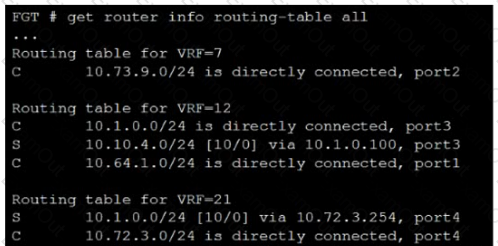How are bulk configuration changes made using FortiManager CLI scripts? (Choose two.)
Refer to the exhibit, which shows a session entry. Which statement about this session is true?

What does the dirty flag mean in a FortiGate session?
Which two conditions must be met for a statistic route to be active in the routing table? (Choose two.)
Which two tasks are automated using the Install Wizard on FortiManager? (Choose two.)
View the exhibit, which contains the output of a real-time debug, Which statement about this output is true?

Which of the following statements is true regarding this output?
Refer to the exhibit, which shows a partial routing table.

Assuming all the appropriate firewall policies are configured, which two pings will FortiGate route? (Choose two.)
A corporate network allows Internet Access to FSSO users only. The FSSO user student does not have Internet access after successfully logged into the Windows AD network. The output of the ‘diagnose debug authd fsso list’ command does not show student as an active FSSO user. Other FSSO users can access the Internet without problems. What should the administrator check? (Choose two.)
How does FortiManager handle FortiGuard requests from FortiGate devices, when it is configured as a local FDS?
Refer to the exhibit, which contains a CLI script configuration on FortiManager.

An administrator configured the CLI script on FortiManager, but the script failed to apply any changes to the managed device after being executed.
What are two reasons why the script did not make any changes to the managed device? (Choose two.)

